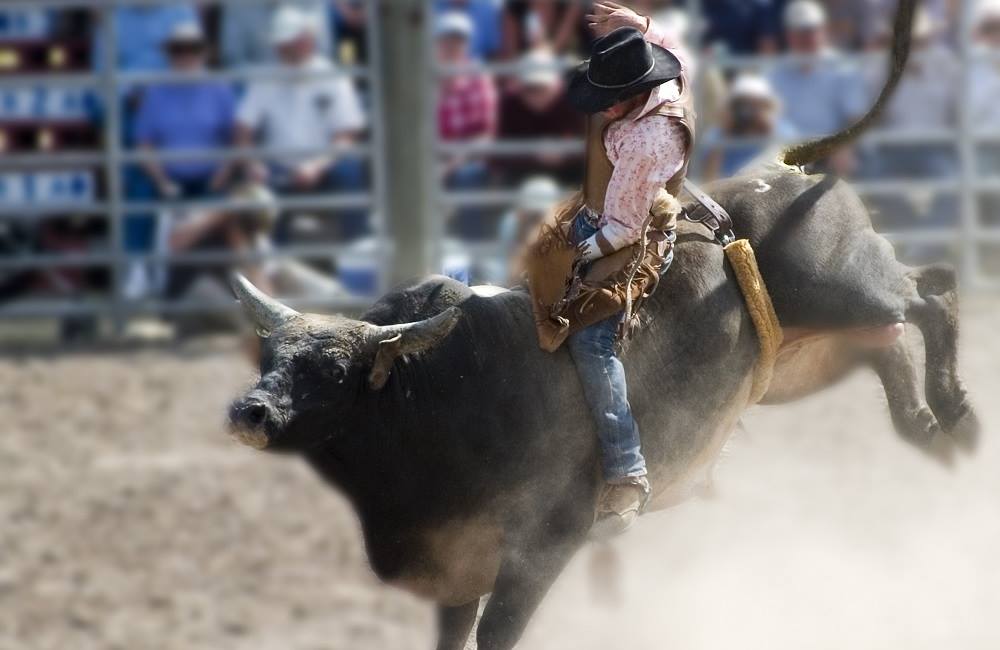
Mechanical bulls have become a mainstay as a party rental for years now.
For example, the mechanical bull ride from Fun Crew USA offers riders the chance to try their skills at various speeds. It also offers a nice, soft landing pad – a 25 x 25 feet inflatable arena that cushions any fall riders may (and likely will) take.
After all, it’s not easy. That was the whole point behind its invention.
As with many things that have a Wild West flavor, the mechanical bull has its roots in Texas. The nation’s second largest state has a long-running relationship with cowboys (including the ones in Dallas) and all things related to living in the West.
Mechanical Bulls in Texas
Anyone who lives in Texas for any amount of time has heard of the iconic mechanical bull ride. That’s especially true for those in Houston.
Originally created to train rodeo competitors, mechanical bulls became famous as a form of entertainment for everyone, not just cowboys, when a mechanical bull at Gilley’s bar in Houston was featured in the film “Urban Cowboy.”
Since then, their popularity has skyrocketed, and now there are even versions designed for children to ride, such as at the Fort Worth Stockyards.
Bull Riding
The concept of hanging on to an angry bull for dear life is ancient, but the modern sport began with Mexican charreadas, in which farmers and ranchers gathered together to strut their stuff and show off what they could do.
Part of the charreadas involved seeing how long one could cling to a bucking bull without falling, and the sport blossomed from there.
It’s evolved over the years to be more humane for the bull. For example, originally the bull riding didn’t end until the bull was dead, but now it just ends when it’s tired or the rider is thrown, whichever comes first.
In 1992, a group of 20 bull riders formed the Professional Bull Riders Inc. to make bull riding not just a feature at a rodeo but a sport in and of itself.
Rodeos and “Urban Cowboy”
From the practice of bull riding rose the concept of mechanical bulls, which were used to train rodeo-goers for the real thing. Mechanical bulls buck and spin in a way that mimics an actual bull’s movements, but they are much safer. Mechanical bulls have an operator who can control the intensity of the machine’s movements and stop it before the rider can be thrown.
They became popular as an attraction when Sherwood Cryer invented one to be used at Gilley’s bar in Pasadena, a suburb of Houston. The bar was named after co-owner Mickey Gilley, a country music singer.
The massive Gilley’s housed many bars and, most importantly, mechanical bulls. The bar served as the central location for the 1980 movie, “Urban Cowboy,” starring John Travolta and Debra Winger. The huge popularity of the movie brought cowboy culture and mechanical bulls into mainstream popularity.
However, the story of Gilley’s had an unfortunate ending. The bar’s success eventually caused a rift between Cryer and Gilley. They eventually closed the bar, and the building itself was destroyed by an arson fire in 1989.
But, fortunately for party planners, the popularity of mechanical bulls lived on.


Bull riding has been an old celebration event with bull riding, and rodeo concepts are dun for those cowboys. This has been a long-time event, and technology has changed a lot of traditions. Riding on the electric bull with the feature of areal bull when it comes bull riding was created. Its mechanical parts will test your ability to hold onto the bull longer.